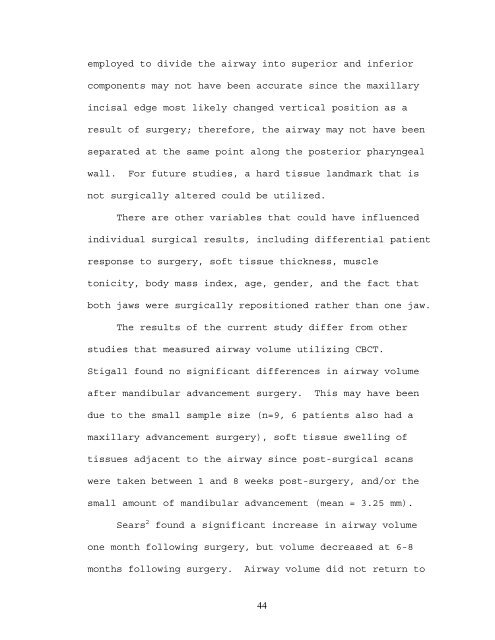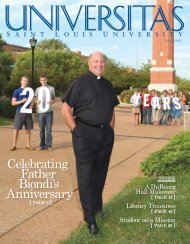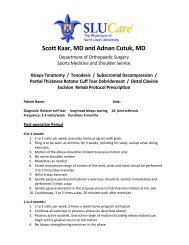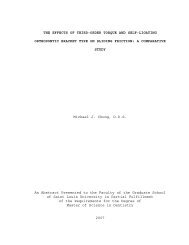PHARYNGEAL AIRWAY VOLUME FOLLOWING ...
PHARYNGEAL AIRWAY VOLUME FOLLOWING ...
PHARYNGEAL AIRWAY VOLUME FOLLOWING ...
You also want an ePaper? Increase the reach of your titles
YUMPU automatically turns print PDFs into web optimized ePapers that Google loves.
employed to divide the airway into superior and inferior<br />
components may not have been accurate since the maxillary<br />
incisal edge most likely changed vertical position as a<br />
result of surgery; therefore, the airway may not have been<br />
separated at the same point along the posterior pharyngeal<br />
wall. For future studies, a hard tissue landmark that is<br />
not surgically altered could be utilized.<br />
There are other variables that could have influenced<br />
individual surgical results, including differential patient<br />
response to surgery, soft tissue thickness, muscle<br />
tonicity, body mass index, age, gender, and the fact that<br />
both jaws were surgically repositioned rather than one jaw.<br />
The results of the current study differ from other<br />
studies that measured airway volume utilizing CBCT.<br />
Stigall found no significant differences in airway volume<br />
after mandibular advancement surgery. This may have been<br />
due to the small sample size (n=9, 6 patients also had a<br />
maxillary advancement surgery), soft tissue swelling of<br />
tissues adjacent to the airway since post-surgical scans<br />
were taken between 1 and 8 weeks post-surgery, and/or the<br />
small amount of mandibular advancement (mean = 3.25 mm).<br />
Sears 2 found a significant increase in airway volume<br />
one month following surgery, but volume decreased at 6-8<br />
months following surgery. Airway volume did not return to<br />
44

















